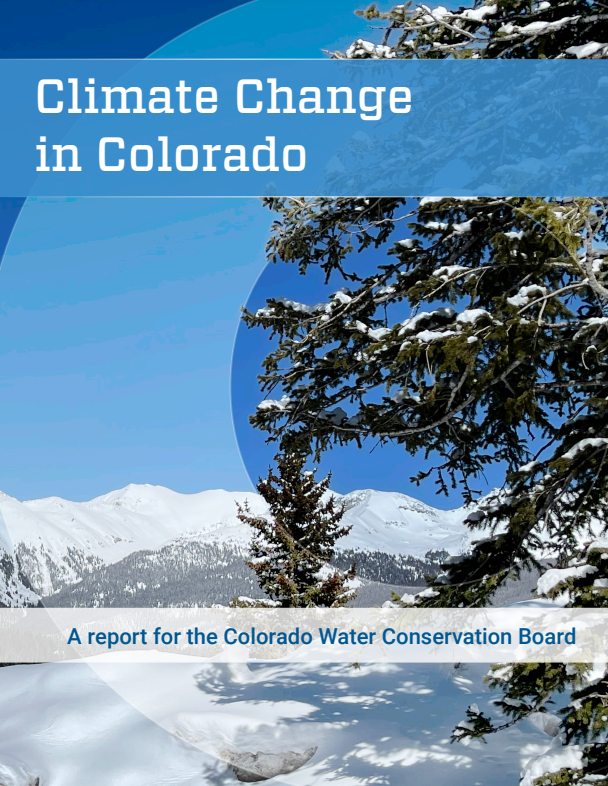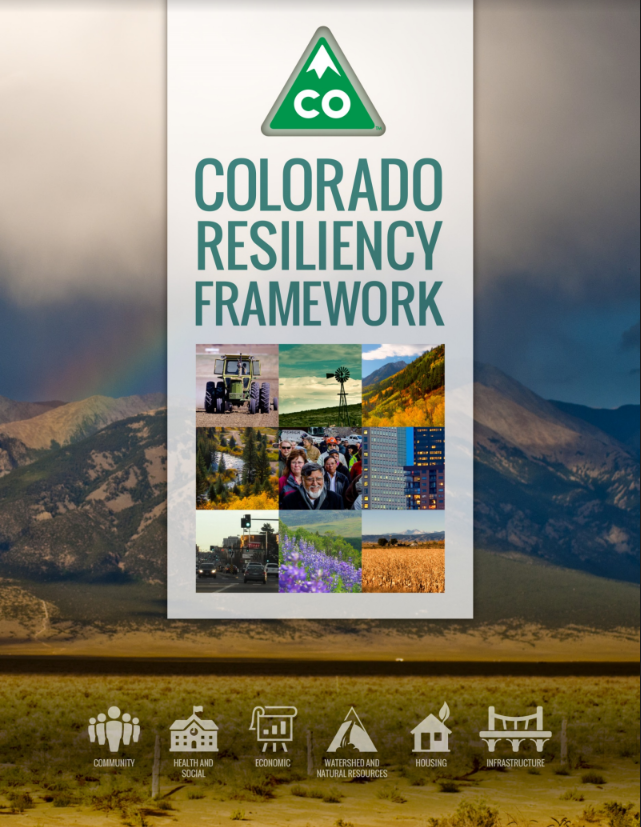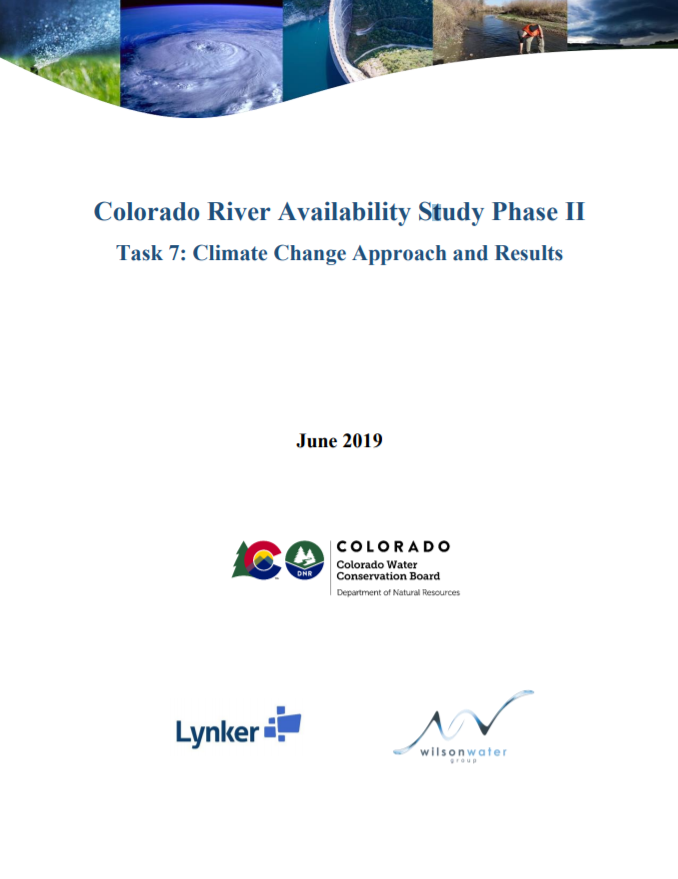Climate

In Colorado, climate change presents a broad range of challenges.
Colorado has warmed substantially in the last 30 years and even more over the last 50 years. Future estimates project temperatures rising an additional 2.5 °F to 5 °F by 2050. This means the warmest summers from our past may become the average summers in our future. With increasing temperatures come shifts in snowmelt runoff, water quality concerns, stressed ecosystems and transportation infrastructure, impacts to energy demands, and extreme weather events that can impact air quality and recreational opportunities.
The challenges we face will affect everyone. However, because it can enhance existing stressors, it has a disproportionate negative impact on more vulnerable populations due to social, political, and economic inequalities. Addressing the impacts of climate change will require collaborative solutions.
Colorado is committed to assisting climate adaptation for all individuals, in all communities.
Check out the newly released Climate Change in Colorado report and web-based tool for the most up to date information on Colorado's climate and hydrologic trends and projections.
Climate Change is Water Change
- Summary of Future Climate
Warmer Temperatures
- Statewide annual average temperatures have warmed by +2.3°F from 1980 to 2022.
- By 2050, Colorado statewide annual temperatures are projected to increase by +2.5°F to +5.5°F compared to 1971 to 2000 baseline.
- Summer and fall are projected to warm slightly more than winter and spring.
Variable Precipitation
- Four of the five driest years on record have occurred since 2000.
- Future change in annual statewide precipitation is much less clear than temperature.
- Climate model projections for 2050 range from -7% to +7% compared to the late 20th century average under a medium-low emissions scenario.
Impacts to Hydrology
- Snowpack: Most climate models project April 1 snow water equivalent (SWE) reductions of -5% to -30% by 2050 compared to 1971-2000 averages. Peak snowpack is projected to shift earlier by a few days to several weeks by 2050 depending on the magnitude of warming and precipitation changes.
- Streamflow: The timing of runoff is projected to shift earlier in the spring by 1 to 4 weeks due to warming. Runoff timing changes will likely occur regardless of changes in precipitation. Annual streamflow reductions could be between -5% to -30% compared to 1971-2000 averages.
- Soil Moisture: Future warming will lead to declines in summer soil moisture statewide. Spring soil moisture will likely increase due to shifting snowmelt timing.
- Evapotranspiration: Evaporative demand, or the "thirst" of the atmosphere, is projected to increase by +8% to +17% by 2050 due to warming.
- Incorporating Future Climate into Scenario Planning
The Technical Update to the Water Plan, released in July 2019, embeds considerations of climate change in our state's future water supply study for the first time. Three of the five planning scenarios examined in the study include assumptions related to a hotter and drier future climate (scenarios titled: Cooperative Growth, Adaptive Innovation, and Hot Growth). The other two planning scenarios (Business as Usual and Weak Economy) assume similar climate conditions and variability to the observed conditions of the 20th century compared to historical natural flows for the period 1950–2013). Projections of future climate conditions were not a part of previous statewide supply studies (e.g. SWSI 2010) and can have a significant influence on hydrology, water use, and estimated supply-demand gaps.
A detailed explanation of the methodology can be found in Volume 2 of the Tech Update. More detailed explanations of climate impacts around Colorado can be found in several documents such as the Colorado Climate Plan (2018), Colorado Water Plan (2022), Colorado River State of the Science Report (2020) and the foundational work of the multi-phase Colorado River Water Availability Study (2019).
- History of Colorado Studies and Reports
- Climate Change in Colorado Report (2024): In the third edition of Climate Change in Colorado, the report describes recent trends in Colorado's climate and hydrology and interprets the model-based projections of future climate and hydrology. Compared to its predecessors, this report has greater coverage of climate extremes and hazards, including heat waves, droughts, wildfires, and extreme precipitation and floods.
- Colorado Climate Change Vulnerability Study: Western Water Assessment, in collaboration with Colorado State University, conducted a broad study of climate vulnerability for the state of Colorado with assistance and guidance from CWCB. Drawing from existing data and peer-reviewed research, the study summarizes the key challenges facing seven sectors: ecosystems, water, agriculture, energy, transportation, outdoor recreation and tourism, and public health. It also details current adaptive capacity and potential strategies in those sectors to meet future climate challenges.
- The Colorado Climate Preparedness Project: The project provides a catalog of climate impacts and adaptation activities and options in five climate sensitive sectors in the state: water, wildlife, ecosystems and forests, electricity, agriculture and outdoor recreation.
- The Colorado River Water Availability Study: The study aims to find out how much water from the Colorado River Basin System is available to meet Colorado’s current and future water needs.
- The Joint Front Range Climate Change Vulnerability Study: The study provided the education, tools and methodology necessary to examine the possible effects of climate change on several common watersheds.
- Drought Planning: The CWCB encourages and assists communities in preparing and implementing drought mitigation plans, monitors drought impacts and educates water providers about drought planning.
- The Colorado Drought Mitigation and Response Plan: The plan provides a road map to assist the state with reducing the impact of water shortages over the short and long-term. The plan includes a mechanism for drought monitoring, impact assessment, response to emergency drought problems and mitigation of long-term drought impacts.
- 2008 Colorado Climate Change: A Synthesis to Support Water Resource Management and Adaptation
- Climate Change in Colorado Fact Sheet
- Colorado's Forests & Climate Change
- Explore More
- Colorado Climate Plan
(Exec Summary, Full PDF 2018) - Colorado Resiliency Framework
(Full PDF, 2015)
- Colorado River State of the Science Report
(Full PDF, 2020) - Colorado River Water Availability Study, Phase II
(Full PDF, 2019) - Climate Change in Colorado Report
(Full PDF, Exec Summary, 2014) - Climate Definitions
- Colorado Climate Plan




